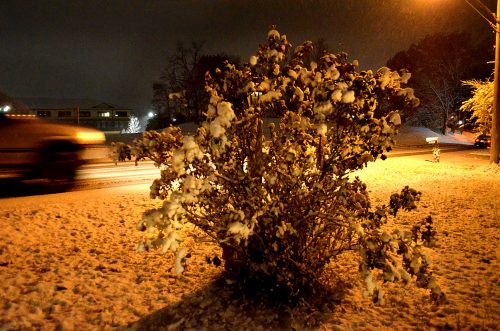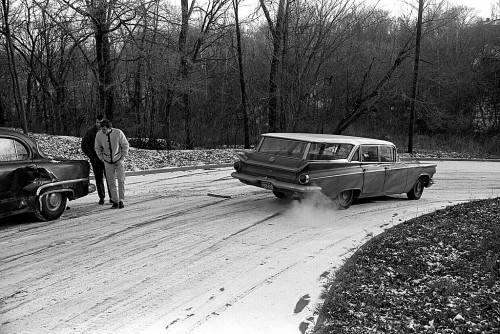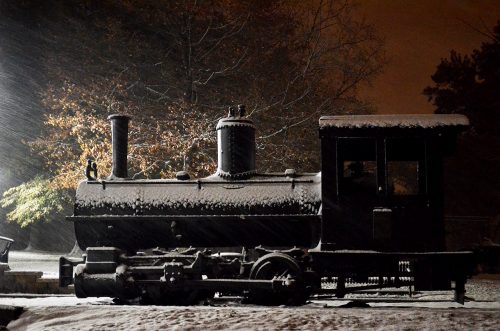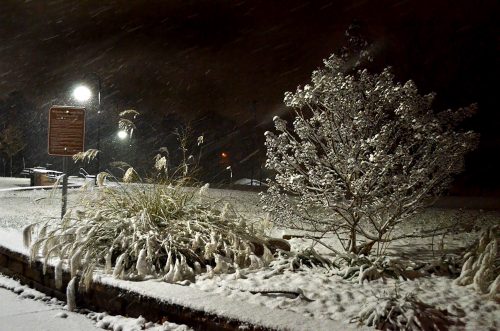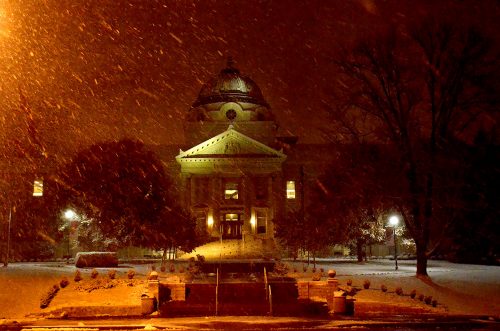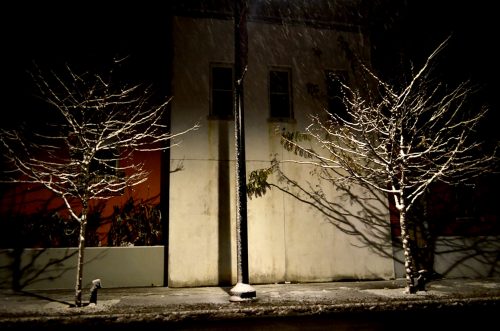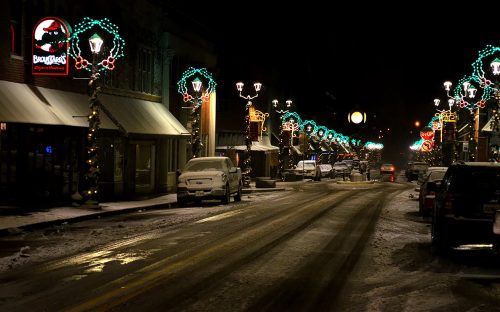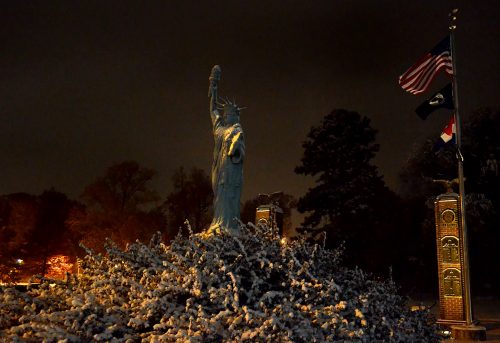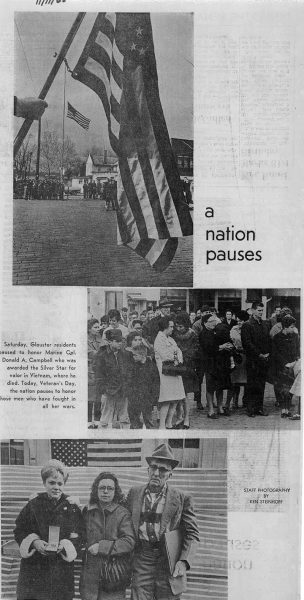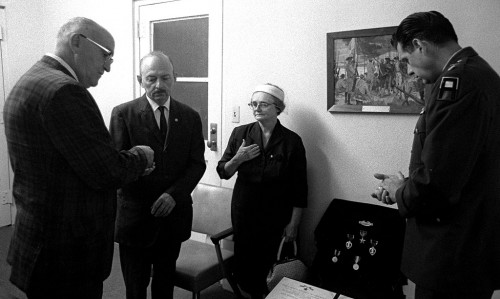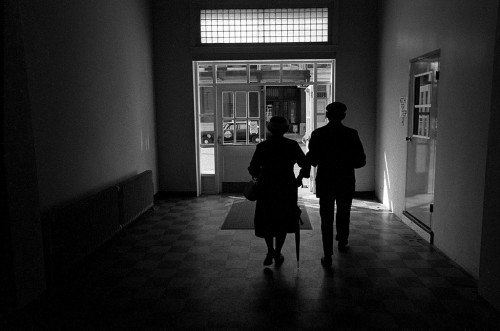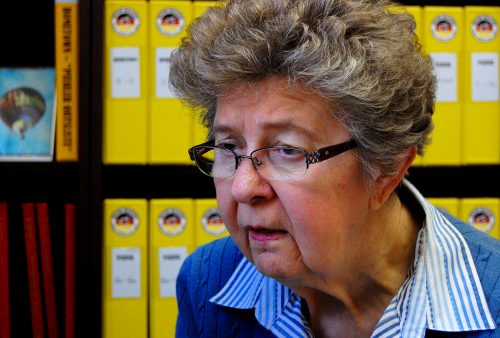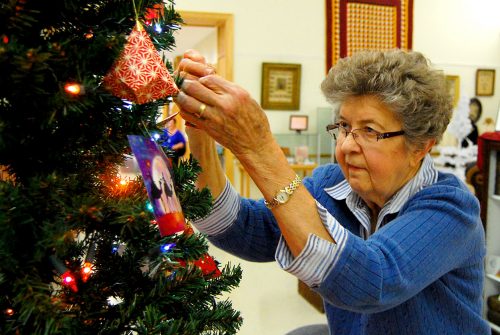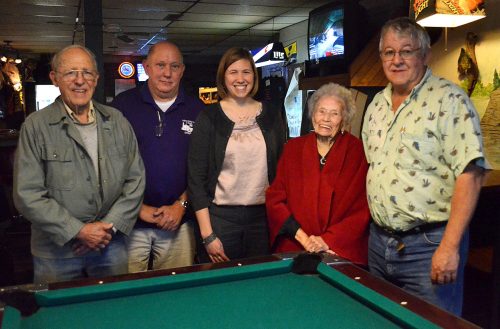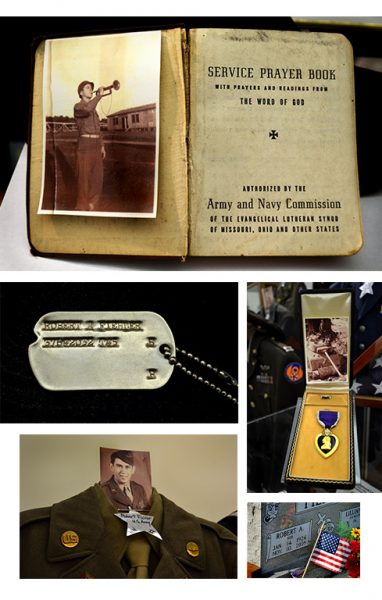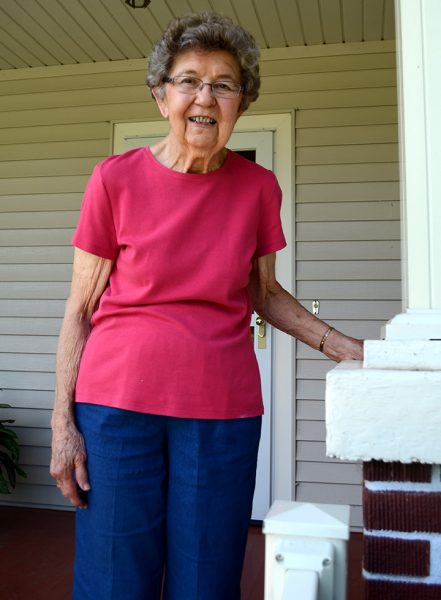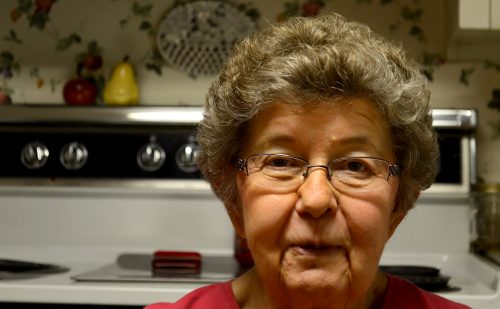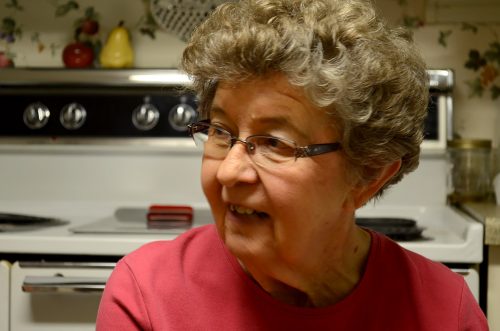
Kid Adam took his oldest son, Graham, on a business trip to Washington, D.C., recently. He thought he owed middle son Elliot a trip, so they hopped on a jet for a weekend in St. Louis. Graham, is 7; Elliot is 5, and Kid 3, Finn, is 3.
Being a born and bred Florida boy, he wasn’t quite sure if he liked cold Missouri weather. (You can click on the photos to make them larger. Once clicked, you can use your arrow keys to step through them)
First stop: City Museum
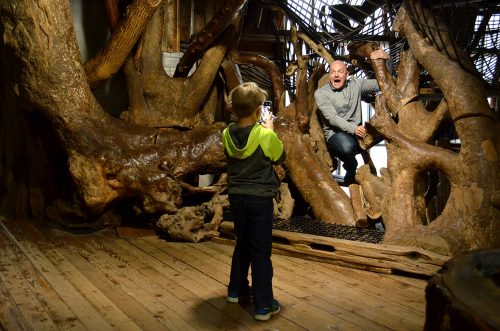
I don’t have many photos from the City Museum because Elliot could go through places the fire department would have to cut me out of. Even his skinny dad contorted his body into shapes I didn’t think possible.
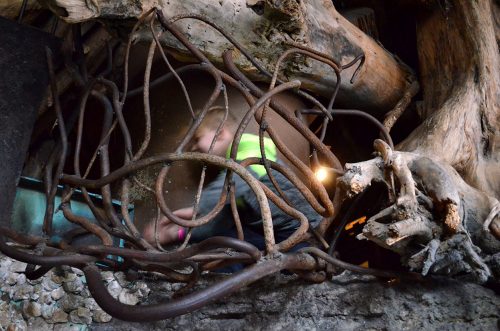
There’s a saying that there are old pilots and bold pilots, but no old, bold pilots. I was perfectly content to let Elliot be bold while I played old.
When we got to the gift shop, I told him to pick something out. He found a stack of shiny stones that WERE quite attractive. When he went to check out, the cashier said, “Four dollars.” She must have seen my face, because she quickly said that the four bucks would buy a tiny pouch that he could fill with as many stones as would fit.
He managed to cram four stones in it, and he played with it the whole time he was in town. Money well spent. His Uncle Mark (actually, I guess he’s his GREAT-uncle) kept scheming to try to entice the rocks from him for some sundry good or service, but he resisted.
Earlier visits to City Museum
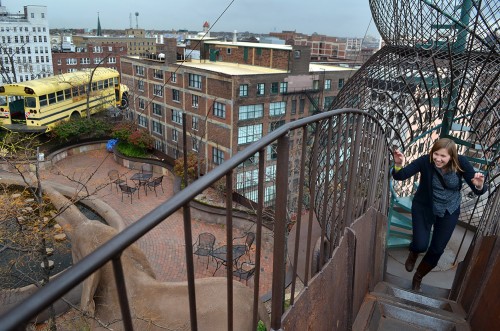
The rooftop was closed for the winter when Adam and Elliot were there, but I DID manage to convince Curator Jessica to ride the Ferris wheel in 2014. (Despite hearing her mutter, “You’re standing on a banana peel on the steps to eternity, but I’ve got a lot of life left, and I don’t intend to die on a Ferris wheel in St. Louis.”)
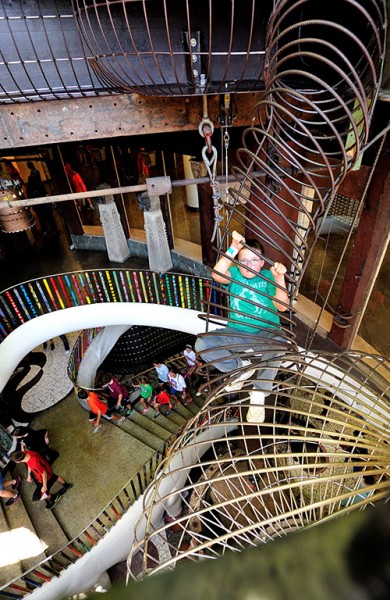
Son Matt and crew were the first Florida Steinhoff contingent to visit the museum. Malcolm, like Elliot, explored all there was to be explored.
Licking the Arch
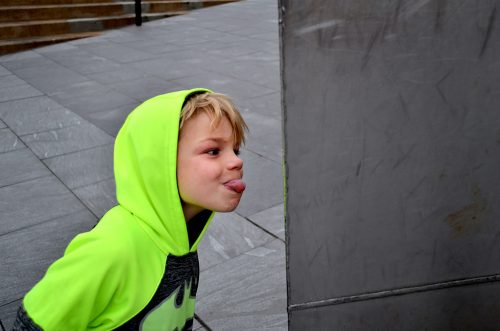
Elliot was afraid his tongue would stick to the stainless steel arch since it was a cold day, so I told him that he only had to stick it out for the photo.
I’ve had various results convincing first-timers that it’s customary to lick the arch. See the results.
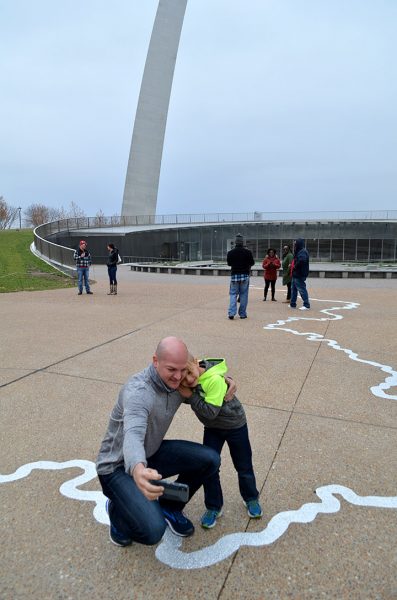
The scale of the Arch was lost on a 5-year-old who was getting cold and tired.
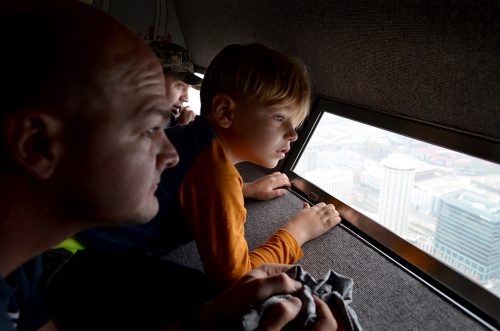
He thought the tram ride to the top was kind of interesting, but it didn’t take long before he said, “I’m bored.”
Pulitzer Arts Museum
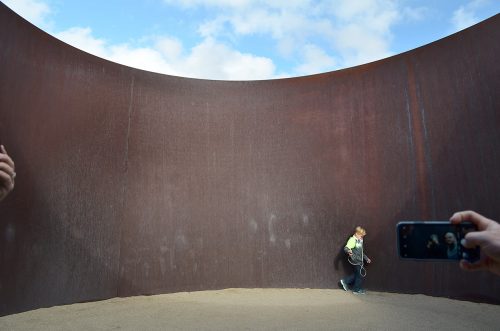
Our first stop the second day was the Pulitzer Arts Museum. He and I weren’t all that impressed by the “art” that was displayed inside.
We liked “Joe” a lot better. Here’s the official description of it. It reminds me of why I often wish I was wearing high boots in art museums.
Commissioned by Emily Rauh Pulitzer as a permanent feature of the courtyard, Richard Serra’s Joe articulates a space that reframes perceptions of scale and movement through its subtle, shifting contours. As a counterpoint to Tadao Ando’s angular forms and immutable concrete, Joe conveys an evolving sense of the organic; the walls of the sculpture’s spiral path expand and contract, conveying you to its center—a vast expanse of sky, framed by a ribbon of weathering steel. Named in homage to the late Joseph Pulitzer Jr., who commissioned the artist’s first site-specific sculpture in 1970, Richard Serra’s Joe stands as a testament to the forces of life that influence and shape us.
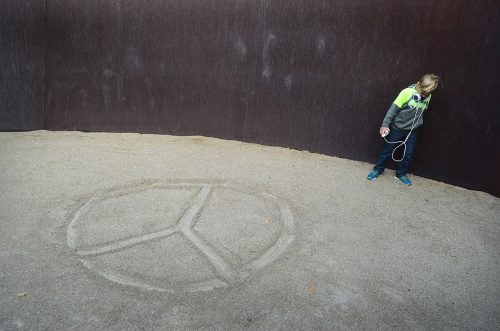
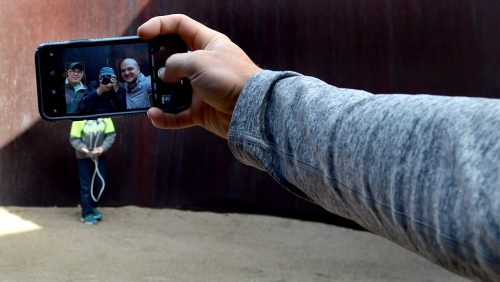
At the top of the stairs in the museum was a phonographic turntable with some vinyl records. Elliot, a child of the digital age, was fascinated. He suggested that we chill and listen to some music.
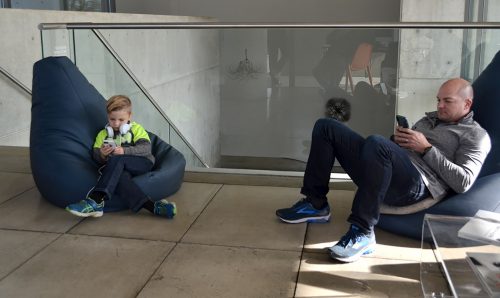
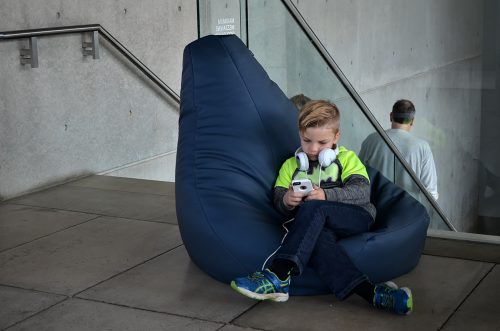
Before long, he and his dad were dancing.
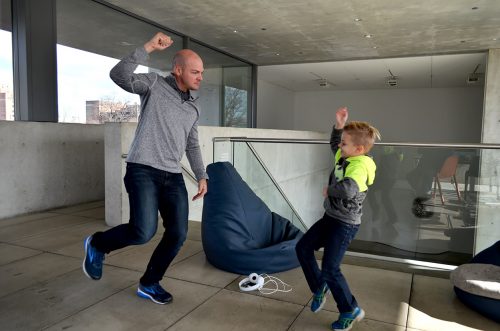
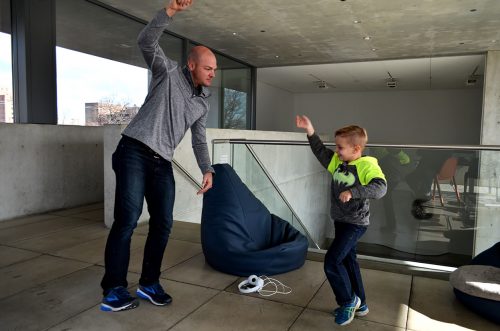
National Memorial Family Church of God in Christ
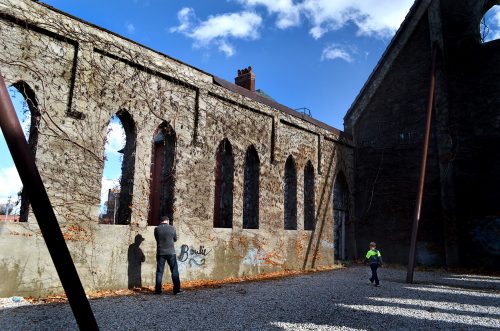
While we were driving around looking for a place to eat, we ran across the ruins of the National Memorial Family Church of God in Christ. The remaining walls of the church had been reinforced, so it was safe to walk in.
Elliot found a small piece of stone inside, and wanted to take it with him to remember the visit. I felt a strong generational bond. I have bricks from Athens, Cape, my grandfather’s liquor store in Advance, and a “convict brick” made by Ohio prisoners and used to build a school. We weren’t sure the TSA would be happy with it in his carry-on, so I mailed it to him later.
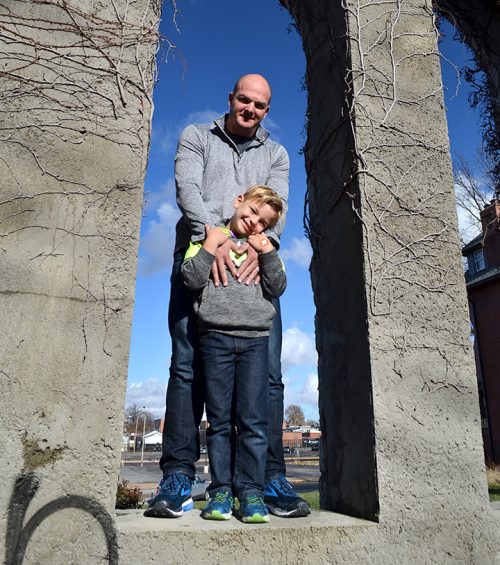
St. Louis Science Center
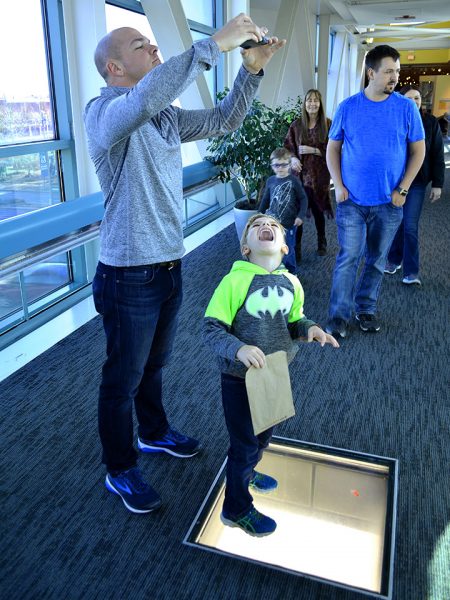
Uncle Mark, who lives in St. Louis, knows all the tricks, so we saved $10 by parking for free at the McDonnell Planetarium, which is connected to the Oakland Building by a walkable Skybridge over Interstate 64/Highway 40. The skybridge is neat because it has holes where you can look down on the traffic below. It also has radar guns and speed displays. In the days when radar detectors were more common in cars, it was fun to watch drivers lock down when their warnings lit up.
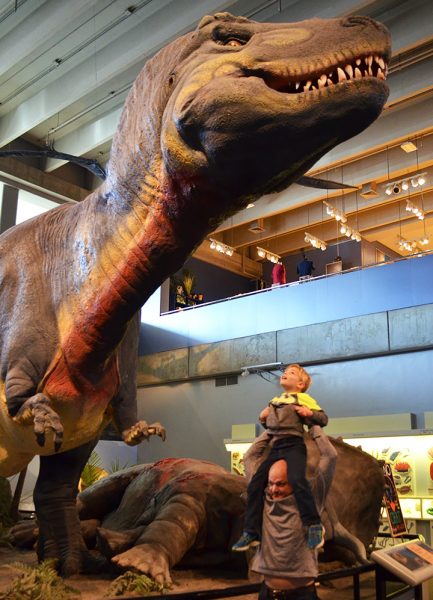
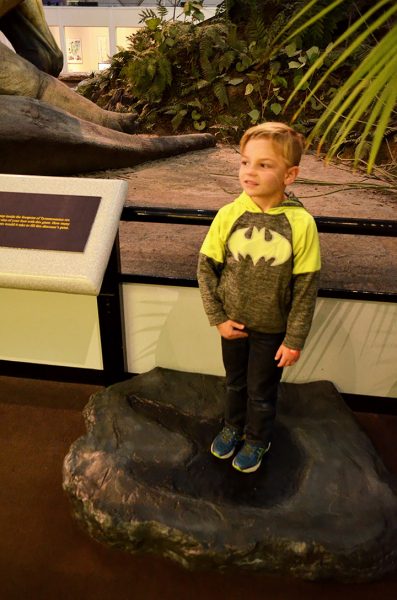
He got to check out dinosaurs and see how he’d fit in one of their footprints.
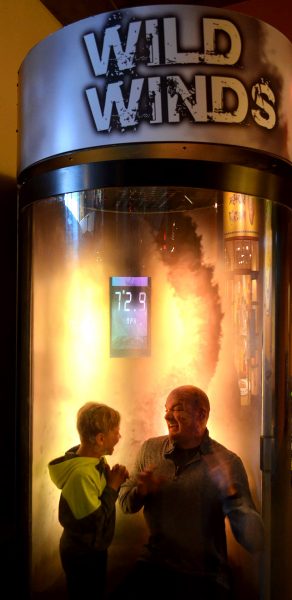
He got to feel wild winds, build a an arch out of foam blocks, and learn all about electricity.
One of the coolest things was a board where you placed elements to show the flow of electricity from the power plant to the substations to transformers to neighborhoods of houses.
He was playing with the blocks when a boy of 8 or 10 walked up and patiently explained the whole concept to him. They played for quite a while, learning how eliminating one house wouldn’t make the rest go dark, but losing a substation or a transformer could.
After the old boy wandered off, Elliot stuck around trying different sets of blocks. A little girl about his age showed up, and Elliot took on the role of tutor, passing on what the older boy had told him. Girls, apparently aren’t much interested in electricity, so she didn’t hang around long.
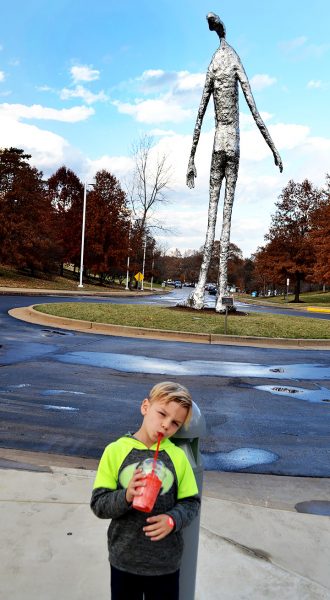
Finally, it was time to rehydrate and head back to Uncle Mark’s house for another treat.
Lime-S Electric Scooter

It seemed like bright lime-green electric scooters were buzzing around all over town. Mark explained how they were rented, and Adam located an unused one about two blocks away.
You can learn how the concept works by going to the Lime website.
He scored it by putting some money in a smartphone app, then he and Elliot went cruising up and down Flora Place. Mark loaned him a helmet and tried to charge his nephew four rocks for it, but the transaction didn’t happen.
I only have the one shot showing him rating the ride two-thumbs-up because I concentrated on video.
Next up will be night shots of the Missouri Botanical Gardens Glow Garden.


